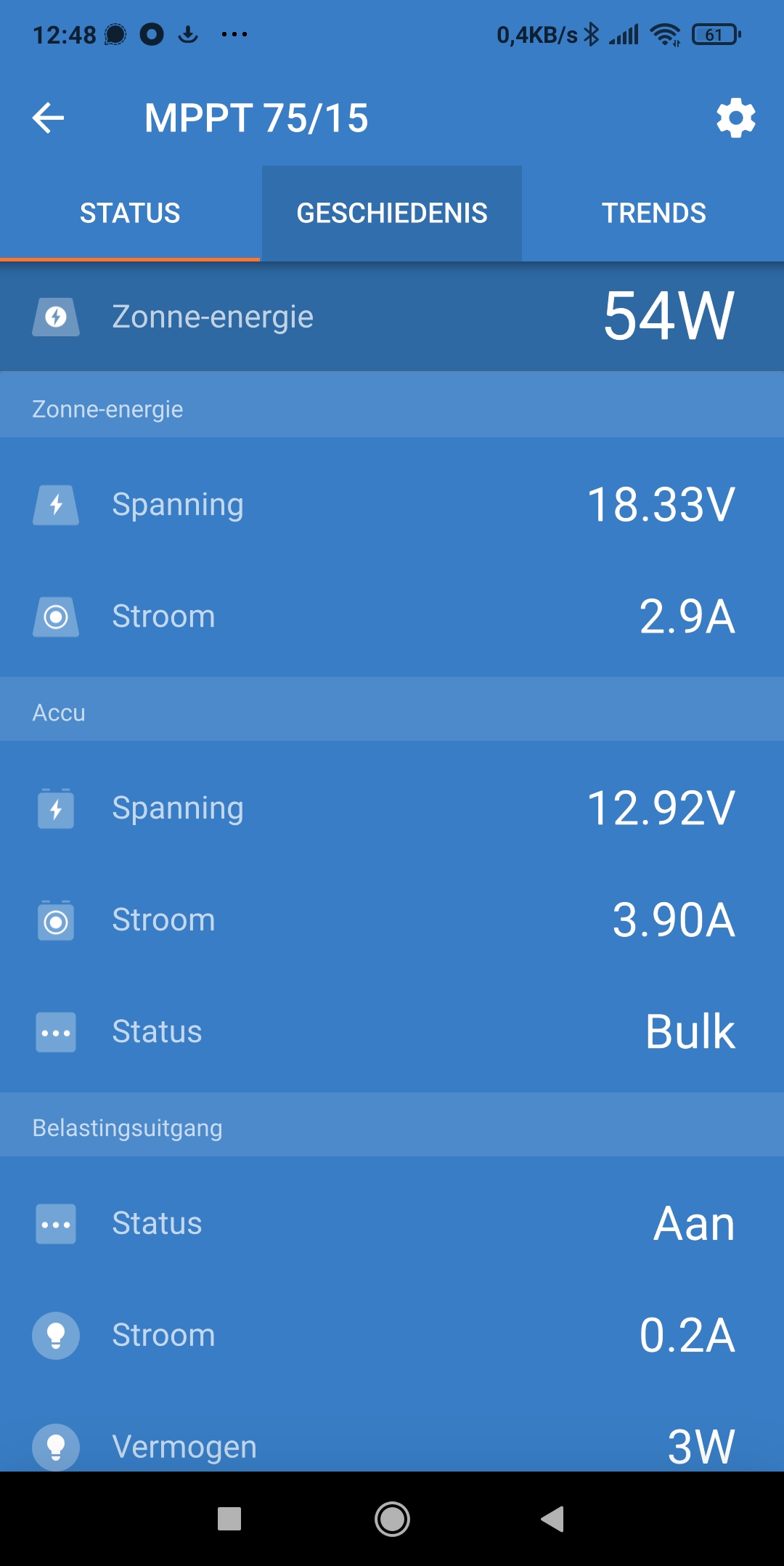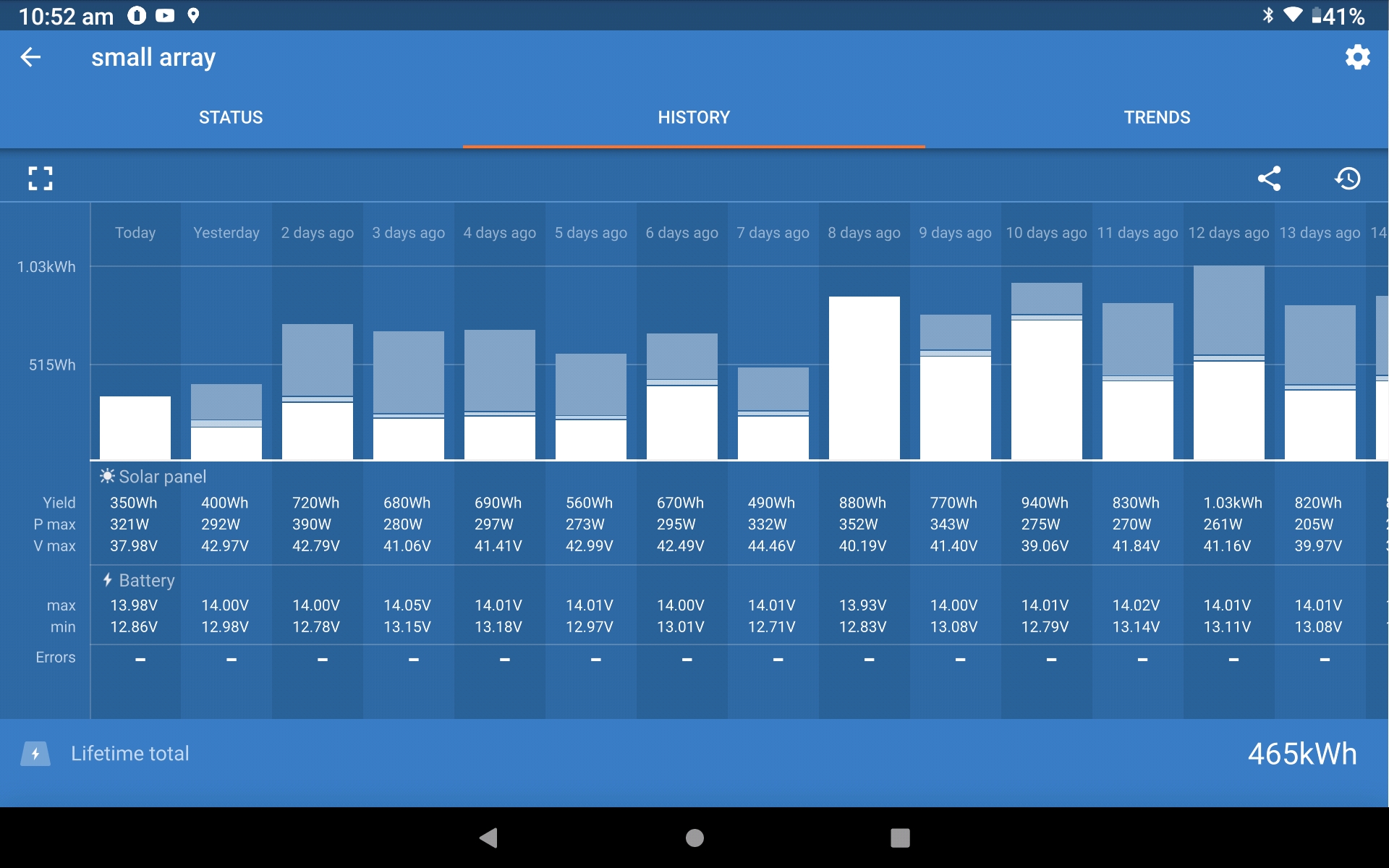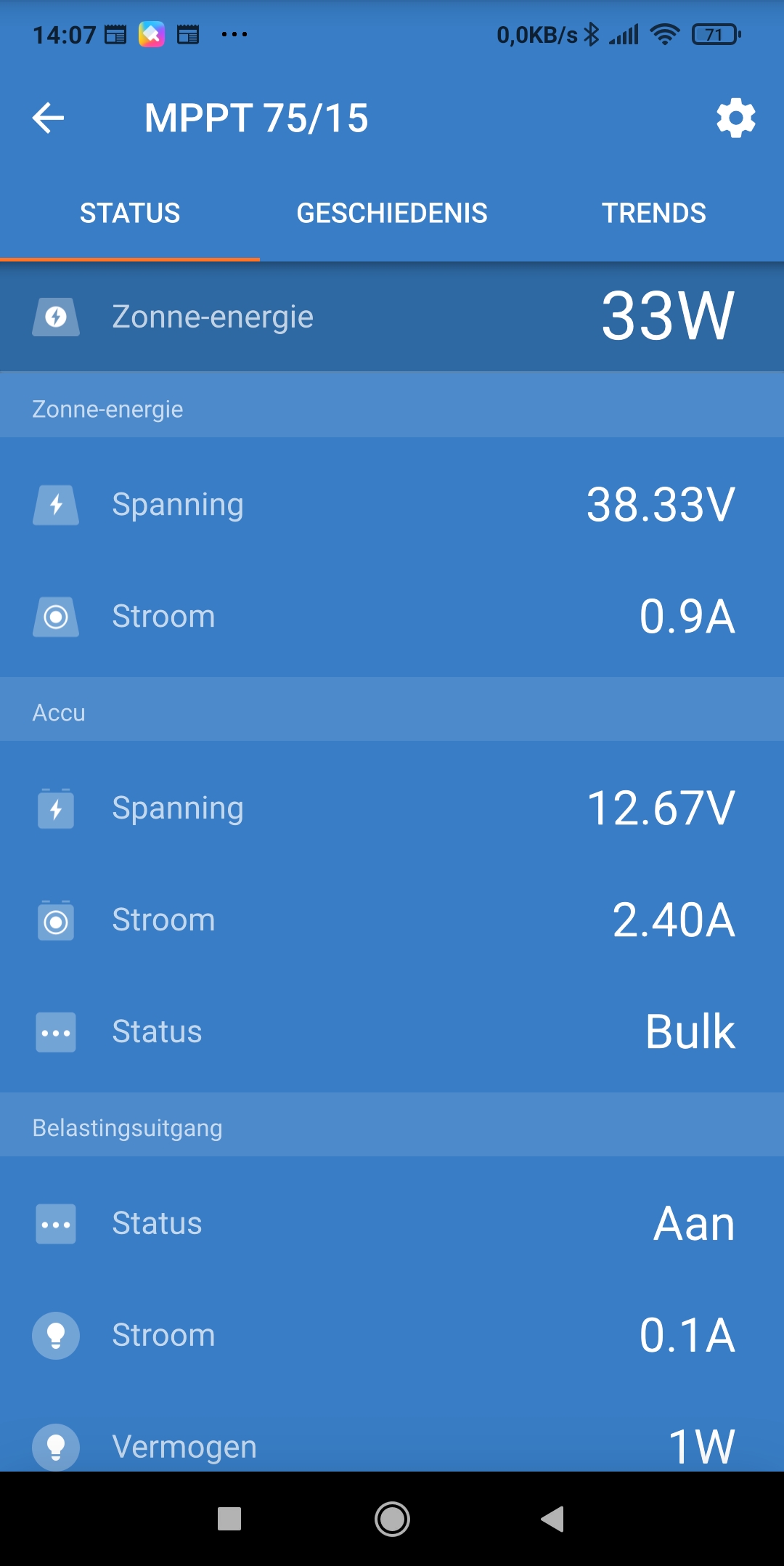My question is about something I do not understand.  My setup is an MPPT 75/15 connected to 2 Sunpower spr e flex solarpanels. It's feeding a bank of 2 x105Ah lead acid batteries. Charger settings are standard for lead acid. Everything worked fine for about 2 years, voltages and current correspond to sun position, strength and cloud conditions.
My setup is an MPPT 75/15 connected to 2 Sunpower spr e flex solarpanels. It's feeding a bank of 2 x105Ah lead acid batteries. Charger settings are standard for lead acid. Everything worked fine for about 2 years, voltages and current correspond to sun position, strength and cloud conditions.
Now, since 2 weeks charging voltage does not exceed 13v. even with the app showing healthy PV conditions. I have to add that I have disconnected any load, and only 1 of the 105Ah batteries connected, to make the screenshot. I will add the csv from the last 30 days as well. (no I won't, the csv file is not an accpted filetype, other possibilities?)
On the screenshot there is a load drawing some current, switching between 0.1 and 0.3 amps. But... the load output of the MPPT 75/15 is disconnected... Before the low charging voltage problem, the load visible in the app was null as it is supposed to be without connected loads.
What do you think the problem can be? Is it reasonable to assume the readings on the app are absolute and should add up to a correct charging profile, or am I missing something?
Dear answerer, I'm hoping you can help..




 Hi guys. Sorry to jump on this thread but i think i have the same issue. Despite no other load on the batterys my mppt seems to be drawing anywhere between 1.5a and higher.
Hi guys. Sorry to jump on this thread but i think i have the same issue. Despite no other load on the batterys my mppt seems to be drawing anywhere between 1.5a and higher.